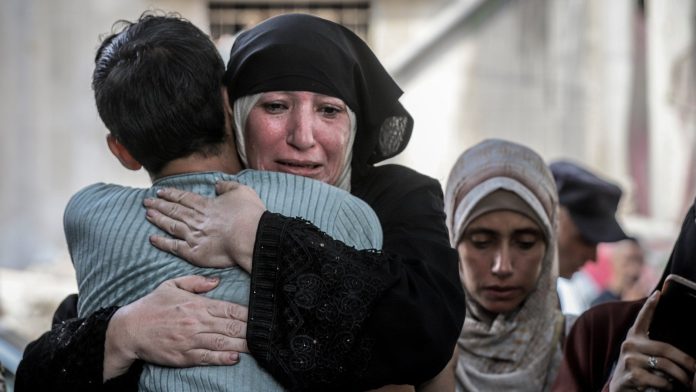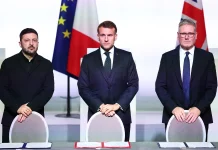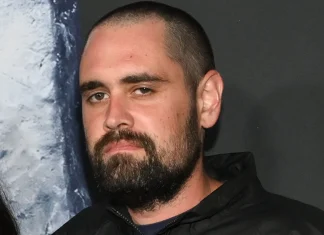The Rising Humanitarian Catastrophe in Gaza: Voices from a Fading Light
Imagine a place where children’s laughter is smothered beneath the relentless hum of distant bombs, where families clutch dwindling rations while hope slips through their fingers like desert sand. This isn’t an ancient story or a dystopian novel. It’s Gaza, in 2024—a small, tightly-packed strip of land on the eastern Mediterranean shore, choking under a crisis the world struggles to fully confront or comprehend.
The scale and intensity of the humanitarian catastrophe in Gaza today have stretched beyond the boundaries of mere crisis into something heartbreakingly unimaginable. A coalition of 24 nations from Ireland to Japan, including European heavyweights like France, Sweden, and Finland, alongside Canada, Australia, and Britain, have stepped forward to sound the alarm. Their joint statement reverberates like an urgent plea: “Famine is unfolding before our eyes. Urgent action is needed now to halt and reverse starvation.”
“It’s not just numbers or headlines anymore. It’s children with sunken eyes too weak to cry, mothers chewing dry crumbs to keep their babies alive,” says Maeve O’Donnell, an Irish aid worker recently returned from Gaza. “If the world doesn’t act, this tragedy will become a historical scar on all our consciences.”
Blockades, Bottlenecks, and the Desperate Need for Aid
The Palestinian enclave finds itself suffocating under strict Israeli controls on aid deliveries—a chokehold that denies entry to much-needed food, clean water, medical supplies, fuel, and shelter materials. The Israeli government maintains their restrictions aim to prevent Hamas militants from siphoning off aid for military purposes. Hamas, on the other hand, denies these serious accusations vehemently.
In recent weeks, Israel took timid steps, announcing partial “pauses” in fighting and designated protected corridors for humanitarian convoys. But these gestures are far from sufficient. The foreign ministers of the 24 signatory countries have pressed Israel to fully open all crossings to “allow a flood of aid” into Gaza, insisting no more precious time can be lost.
“These aid interruptions and bureaucratic obstacles are literally translating into death on the ground,” explains Rik Peeperkorn, the World Health Organization (WHO)’s representative in the Palestinian territories. “We’re witnessing a health system in freefall.”
Health System on the Brink: Hospitals Overflow and Medicines Plummet
The numbers are harrowing:
- Over half (52%) of essential medicines in Gaza have completely run out, according to WHO data.
- Hospital beds are packed beyond capacity — with Al-Shifa hospital reporting 240% occupancy and Al-Ahli hospital at a staggering 300%.
- Only 50% of hospitals and 38% of primary healthcare centers are operational, and even then only partially.
- Nearly 12,000 children under five suffer from acute malnutrition, a record high.
- Malnutrition-related deaths have already claimed 148 lives this year.
“We are literally trying to stockpile the essentials for a siege we know is coming,” confides Peeperkorn. “But every step is a struggle—supplies denied entry, endless red tape. This is not a distant conflict; it’s a crumbling health infrastructure and human dignity on life support.”
A Photographer’s Frame: Human Faces Behind the Crisis
Walking through Gaza City’s battered streets, the devastation becomes intimate — a boy tenderly holding his sister amid collapsing shelters, mothers queuing for hours beside dusty wells for a bucket of dirty water, elderly men and women clutching family photos that may be all that survives them.
“Our culture is woven with community and resilience,” reflects Layla Haddad, a Gaza-born social worker. “But resilience has limits. When children cry from hunger, when homes are destroyed faster than they can be rebuilt, even the strongest spirit begins to crack.”
The Battlefront and the Media: When the Story Becomes a Target
The war in Gaza isn’t only fought with tanks and rockets; it’s also a war over narratives, voices, and truth. The recent bombing that killed five Al Jazeera journalists, including Anas al-Sharif—a trusted face narrating Gaza’s daily heartbreak for almost two years—brought fresh outrage.
“Anas was a brave soul, a man who put himself in harm’s way to show the world what Gaza is really going through,” says Nadia Rahman, a Palestinian journalist and friend of al-Sharif. “His silence robs the world of an honest witness.”
Human rights organizations and the United Nations have condemned the strike as a “grave breach of international humanitarian law.” Yet Israel defends the targeting, accusing al-Sharif of being a member of a Hamas militant cell. International observers remain deeply skeptical, highlighting a troubling pattern: journalists labeled as “militants” with scant public evidence.
“Journalists aren’t combatants,” stresses Jodie Ginsberg, head of the Committee to Protect Journalists. “Unless credible proof is provided, targeting them breaks the most fundamental principles of war and free press.”
Daily, Gaza’s stories need telling—as if, somehow, bearing witness can lessen the unbearable. But when those bearing witness themselves are silenced by violence or siege, the world risks being left deaf to the suffering amid the rubble.
What Does This Mean for the Global Community?
How do we respond to suffering that seems so far away—yet so profoundly human? What responsibility does the international community bear when famine, starvation, and the breakdown of medical care unfold before our eyes, and powerful actors block relief efforts under the pretext of security?
In the shadow of this tragedy, several pressing questions arise:
- How can aid agencies and governments break through political barriers to save lives?
- What mechanisms exist, or need creation, to protect journalists reporting from conflict zones?
- How do we balance the legitimate security concerns of states with the principle of unconditional humanitarian access?
- To what extent does global political will match the scale of human catastrophe unfolding daily in Gaza?
It’s easy to feel overwhelmed—numb to statistics and disconnected from distant conflicts. But behind every number is a human heartbeat, a story of pain and loss, and a stubborn flicker of hope. The crisis in Gaza implores us not to look away.
A Call to Humanity
Standing before the grave of Anas al-Sharif, his colleague Mohammed Abu Salmiya reflects, “We bury more than lives; we bury voices, dreams, truth itself.” The people of Gaza, trapped amidst political strife and violence, deserve more than to be casualties of silence.
Every humanitarian convoy delayed, every medicine withheld, every journalist silenced chips away at the frail thread holding this besieged community’s future together. As global citizens, we must ask ourselves: what kind of world do we want to advocate for? One where suffering is acknowledged and action follows? Or one where indifference deepens wounds?
If the world’s conscience weighs heavy in these times, might the true measure of our humanity be found in how we respond? Gaza’s story is not just theirs — it’s a mirror reflecting our collective failure and our shared hopes for peace, dignity, and life.
So, next time you think of Gaza, think not only of a conflict zone but of a place full of resilient souls fighting to survive amid the shadows—reminding us of our own fragile humanity and the urgent need to heed their call.










